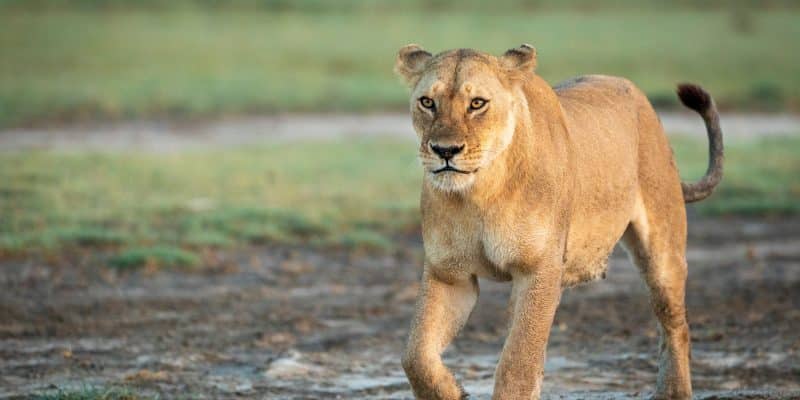A team of Chadian ecologists and scientists from the Wildlife Conservation Society (WCS) have announced the return of the lion to Sena Oura National Park in southwestern Chad. A lioness was photographed on 22 February 2023 in the park. Conservationists welcome the return of lions to a national park where the species has not been seen since 2004.
A team of Chadian conservationists and scientists from the Wildlife Conservation Society (WCS), the New York-based conservation organisation in the United States of America, released an image on Thursday 20 April 2023, which was described as “a beautiful lioness, at her peak and clearly in excellent health”.
The photo was taken on 22 February 2023 by a camera trap in Sena Oura. In this national park in southwestern Chad, lions were last seen in 2004, according to WCS. The team of scientists behind the discovery believe that there is more to the park than just this lioness. “Unlike other big cat species, lions (especially females) generally live in family units called ‘troops’,” says Luke Hunter, executive director of the WCS Big Cat Program.
A species listed as vulnerable by the IUCN
Nowhere to be found due to organised and ruthless poaching, the lions were considered extinct in Chad’s Sena Oura National Park. The protected area of about 182,000 hectares is adjacent to Bouba N’djida National Park in Cameroon, where the big cats “are now on the increase and appear to be recolonising parts of their former range, including Sena Oura”, says WCS.
Read also-AFRICA: Lionscape, coalition to protect lions and double their numbers
Despite this recovery of the species in Chad, lions are considered a “vulnerable” species worldwide. According to the 2014 edition of the International Union for Conservation of Nature (IUCN) Red List of Threatened Species, there are 22,000 to 24,000 lions in the wild.
Their populations in West and Central Africa are declining. According to the WCS, the lion population has declined by about 66% since the early 1990s and is considered “critically endangered”.
Boris Ngounou







